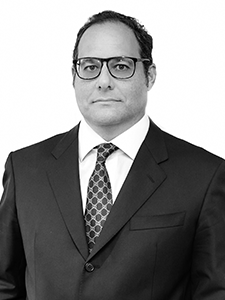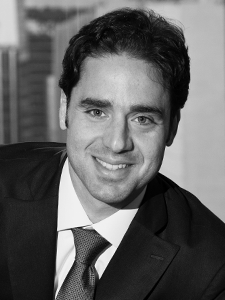Begoña Cancino
Partner en
Creel, García-Cuéllar, Aiza y Enríquez
¿Cómo se ha desarrollado el primer trimestre del año en el mercado transaccional mexicano?
Desde la perspectiva de Propiedad Intelectual, el primer trimestre del año se percibe sumamente activo, la firma ha participado en varias operaciones con componente de esa práctica, no solamente por lo que hace a signos distintivos, sino también, software, secretos industriales y de forma preponderante, patentes farmacéuticas.
¿Qué sensaciones se perciben desde el sector legal?
Se percibe la sensación de que aún con la incertidumbre que pudiera implicar los cambios políticos en Estados Unidos, la inversión no se ha desincentivado, los instrumentos financieros que se apuntalaron en el año anterior han puesto sobre la mesa capital que debe ser ejercido en inversiones específicas, se espera que eso ocurra.
Durante 2016 participó usted en algunas operaciones relacionadas en cierto modo con el sector turístico y hostelero, como es el caso de la adquisición de Corporate Travel Services (CTS) por parte de Travel Leaders, o la adquisición del 51% del Proyecto Mayakoba por parte de RLH Properties. ¿Cree que este sector cuenta con potencial para que veamos grandes operaciones a corto o medio plazo?
Creemos que en efecto el sector turístico tiene potencial, pero desde la perspectiva de IP el sector que más potencial parece tener en el contexto transaccional es el farmacéutico, el de consumibles y el de telecomunicaciones.
Está usted especializada en propiedad intelectual, una disciplina que ha ganado protagonismo con el paso del tiempo en el sector legal. ¿Este tipo de asesoramiento es muy demandado en las grandes operaciones corporativas?
Es una práctica de gran importancia pues en la gran mayoría de las operaciones corporativas existe un componente de propiedad intelectual en mayor o menor medida (siempre existen activos intangibles protegidos o no por las corporaciones que inciden en su forma de hacer negocios, tanto internamente – a través de know-how, procedimientos internos, sistemas, secretos industriales, etc. – como de manera externa – marcas, patentes, derechos de autor que se utilizan en el entorno comercial como medio de identificación de productos o servicios ante los consumidores). Sin embargo, no obstante a la clara relevancia de estos temas en todo negocio y a que con el tiempo se ha ido haciendo conciencia de ello, aún no es un asesoramiento que sea tan demandado como debiera en el ámbito legal, en realidad, muy pocos despachos en el mundo tienen una práctica serie y dedicada a Propiedad Intelectual Transaccional, que conjuga conocimientos profundos en temas de IP y al tiempo, conocimientos profundos en aspectos corporativos/transaccionales. La práctica de IP al menos en México, se ha desarrollado en torno al registro y a la protección de activos intangibles, pero no a su importancia en una operación corporativa desde el punto de vista transaccional.
Podemos decir con seguridad que este despacho es el único que realmente cuenta con una práctica especializada en IP transaccional en México, que se ha ido afinando desde hace más de 8 años con nuestra intervención activa en las transacciones más importantes de México. ¿En qué sector o sectores considera usted que cobra más importancia? Cobra una relevancia mayúscula en operaciones que implican la adquisición de sociedades dedicadas a toda clase de servicios, retail, consumibles, tecnologías de la información, telecomunicaciones, mención especial merecen las grandes transacciones en las que hemos participado para documentar la adquisición de empresas dedicadas al sector de bebidas alcohólicas, principalmente, bebidas que se protegen mediante la figura identificada mundialmente como “denominación de origen”, como ocurre con el tequila y el mezcal, pues al tratarse de denominaciones de origen mexicanas que se regulan con disposiciones locales (Ley de la Propiedad Industrial), la intervención de un especialista en propiedad intelectual y transaccional, que además domine la regulación aplicable a denominaciones de origen es indispensable. Los inversionistas deberán ser cautelosos y analizar objetivamente las fortalezas y debilidades de la relación bilateral, así como el alto grado de integración económica que ya existe entre los dos países.
Hoy cada ‘twit’ que es enviado desde la Casa Blanca impacta alguna variable en los mercados internacionales. Ha predominado la hipersensibilidad e incertidumbre, sin embargo, vale la pena considerar que prácticamente ninguna acción decretada o negociada en el contexto bilateral será de aplicación inmediata. Hay instancias y mecanismos regulatorios que ni el más impulsivo y radical de los actores podrá obviar. En adición, conforme avance el año, surgirán voces y contrapesos importantes que encausarán las discusiones con base en la lógica de negocios que debiera imperar en los flujos de inversión y del comercio entre ambos países. En conclusión, Estados Unidos seguirá siendo muy relevante para el mercado transaccional mexicano. En ese país operan la mayoría de las empresas mexicanas más globalizadas y viceversa.
También se especializa usted en el campo regulatorio. ¿Cree que la situación existente entre México y Estados Unidos puede impulsar grandes cambios legislativos?
Desde la perspectiva regulatoria/propiedad intelectual, el principal acuerdo legal que existe entre ambos países se encuentra reflejado en el TLCAN, aunque hasta el momento no se ha definido la suerte de dicho instrumento, es claro que la posible modificación y/o denuncia del mismo daría pie a cambios legislativos importantes en todos los ámbitos, incluyendo el que hace a mi práctica. Conforme a lo que ha manifestado el subsecretario de Comercio de la Secretaría de Economía, en la renegociación del TLCAN uno de los fundamentales es que no se permitirá el regreso de aranceles entre los países firmantes, y aunque hasta ahora no hay una comunicación oficial por parte del Gobierno de EU sobre los puntos que querrá renegociar, sabemos que Donald Trump ya ha enviado al congreso de EU su propuesta de renegociación de dicho tratado, en la que uno de los principales cambios sugeridos es la imposición de tarifas arancelarias cuando el nivel de importación “dañe o amenace seriamente” a industrias locales y esto estará sujeto a interpretación. De cualquier manera, entendemos que la renegociación del tratado no iniciará antes de julio, ya que el proceso interno de EU establece un periodo de 90 días para consultar a todos los involucrados.
Desde la práctica regulatoria en que me especializo, percibo que podrían haber restricciones a la importación y exportación de productos que podrían incidir en mayores requisitos legales tanto desde la óptica de IP como de protección al consumidor. De manera más concreta, hasta el momento ha trascendido que la propuesta para renegociar el TLCAN incluye cambios a comercio de bienes y servicios, reglas de origen, cooperación, barreras técnicas, cooperación y propiedad intelectual, entre otros. Ampliar la preferencia arancelaria para bienes de EU que aún tienen impuestos. Eliminar barreras no arancelarias, especialmente para productos agropecuarios. Delimitar nuevas reglas de origen que favorezcan a la producción estadounidense. Reforzar el marco de propiedad intelectual para evitar la piratería y contrabando, incluyendo mayores sanciones. Crear reglas para el sector de telecomunicaciones y comercio electrónico, entre otras, que no están contemplados. Aumentar la regulación para evitar la corrupción. Permitir que EU tenga maneras más rápidas y eficientes de crear sanciones comerciales y crear reglas comunes para el ámbito laboral, creando estándares comunes, entre otros aspectos.
Continuando con esta difícil situación, ¿es usted optimista o pesimista respecto al mercado transaccional mexicano en base a la relación con Estados Unidos?
Estoy optimista dado a que el intercambio comercial entre ambos países es necesaria, considero que este es un momento de acomodo y que sabremos capitalizar el cambio.
¿Cree que la política de Donald Trump puede ser una oportunidad para un mayor desarrollo del mercado local mexicano o cree que México necesitará buscar otro gran aliado?
Considero que todo cambio es una oportunidad para el desarrollo y que México no debe cerrarse ni ahora ni en el futuro, a la búsqueda de aliados comercial.







